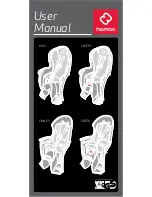
3
Paper Stock
The paper stock itself plays a very important role in application of BOD.
Blank Paper Stock
The paper must be ES&S Opaque, and it must be trimmed to the proper width and
length specifications (8.50” x 14.00” +/- .020”). If the paper is narrow, it will
reduce the printing tolerances, which makes it more difficult to meet proper ballot
specifications. The narrow paper will also have more freedom of movement
through the printer, which can result in a skewed ballot image. In addition to the
increased possibility of a skewed ballot image, a narrow ballot will also increase
the possibility of a ballot skew within the scanner ballot transport that can lead to
feeding errors. A major disadvantage of using blank stock is that there is no visual
confirmation that a ballot has been printed within tolerances.
Digital Ballot Stock
ES&S has developed a Digital Ballot Stock (DBS) that enhances our ability to
produce quality ballots on xerographic printers. The DBS is produced with ES&S
Opaque paper. Since the stock is preprinted with trim and registration marks, the
width of the DBS is guaranteed to be within specification, and the registration
targets allow visual inspection of each finished ballot to insure that it was printed
within tolerances. ES&S highly recommends the use of DBS to insure high quality
ballots and a minimal scanner rejection rate.
Printer Trays
Two printer input paper trays can be used on the Okidata 9300.
Tray 1
Tray 1 is the paper drawer under the printer. This tray can be used to duplex 14
and 17-inch ballots. 19-inch ballots must be fed into the Multipurpose Tray.
Multipurpose Tray
The Multipurpose Tray extends from the right side of the printer. This tray can be
used for 14,17, and 19-inch ballots. The printer will duplex both the 14 and 17
inch ballots from this tray, but the 19 inch ballots must be fed through a second
time to print the backs.







































